How to start a plant-based diet
Plant-based diets are a very promising healthy food trend: Research suggests people who mostly eat a whole-foods, plant-based diet could reduce their risk of heart disease, some cancers, diabetes, and Alzheimer’s disease. Most people could generally benefit from eating more fruits and vegetables. Although transitioning your diet might seem daunting, it doesn’t have to be. Here’s how to start eating a plant-based diet, according to experts.

Start slow
Just jumping into any new eating habit can be tricky. If you’re currently a heavy meat-eater, you don’t have to go cold turkey, says Andrea Nordby, head chef of Purple Carrot, a plant-based meal kit company in Massachusetts. Instead, Nordby says to swap out two meals per week with a plant-based recipe. “Slow and steady wins the race, and you are more likely to enjoy the process of going plant-based if you don’t rush right into it,” she says.
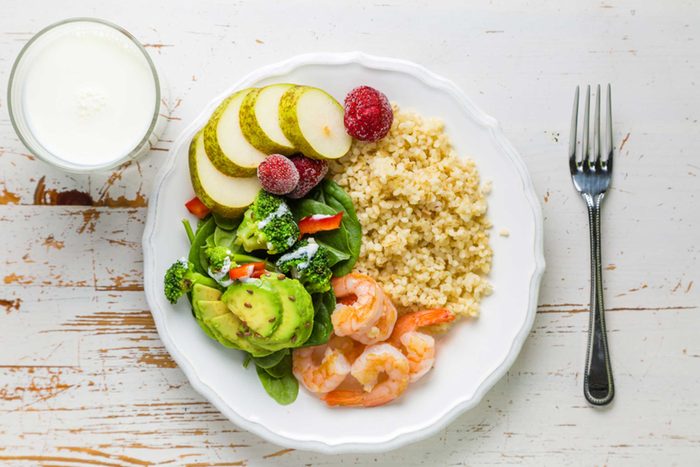
Change the proportions on your plate
Instead of having meat with vegetables, have vegetables with meat, says Elizabeth Klodas, MD, a cardiologist in Minneapolis, MN, and chief medical officer of Step One Foods, a company dedicated to helping patients minimize their dependence on medications through strategic dietary changes. “This can not only move your closer to a plant-based diet but also reduce your calorie intake,” says Dr. Klodas. “That adds up to big results over time: 100 calories per day is 10 pounds in a year. “The best part? You’re still eating the foods you love but you’re just adjusting the amounts,” she adds. (On the go? Check out these plant-based fast food options.)
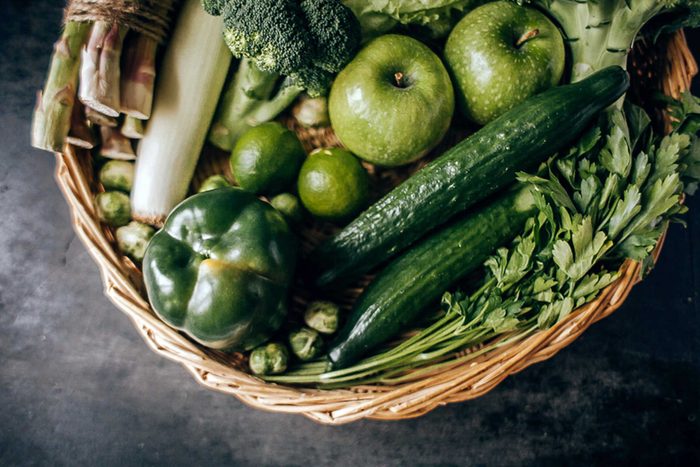
Add more greens
Adding a large salad to your day is another tip from Nordby. “It’s easy to avoid meat products when you add in one huge salad to your day,” she says. After all, greens are among the healthiest vegetables. “Instead of packing or buying a sandwich for lunch, try a super veggie-packed salad chocked full of leafy greens, legumes, crunchy vegetables, and a dollop of hummus to keep you full and help nourish your body.” Consider a salad mid-day. “Try a salad for lunch each day, and I promise you won’t even miss your go-to turkey sandwich. Pretty soon you’ll be naturally eliminating meat without even knowing it,” Nordby continues.
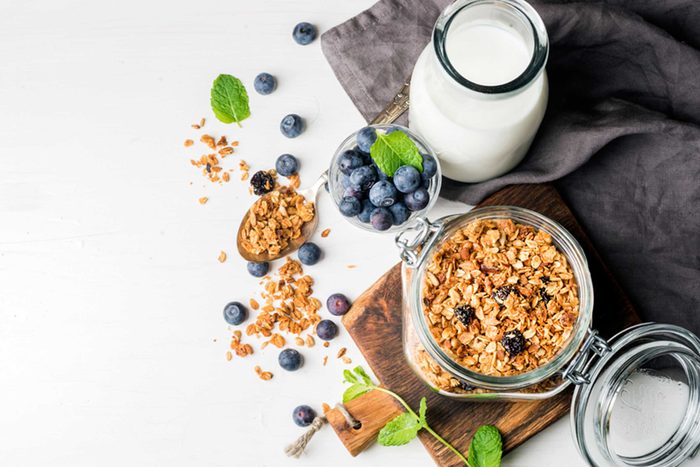
Make breakfast shine
“Changing breakfast into a concentrated, high-quality plant-based food occasion is a great strategy,” says Dr. Klodas. “Think oatmeal with walnuts, cinnamon, and blueberries, or a smoothie with not only fruit and yogurt but also chia, flax, almonds, and oat bran thrown in.” This will help ensure that you get enough whole food fiber, antioxidants, and those vital omega-3 fatty acids into your diet—even if the rest of the day is less plant-based, according to Dr. Klodas, (Learn more about how a nutritional breakfast makes your day better.)

Make your diet more colorful
In can be easier to get more plants into your diet by adding different colors at every meal—and those food colors signal different nutritional benefits. “The colors often reflect different phytochemicals which occur naturally only in plants and may provide health benefits beyond those that essential nutrients provide,” says Rebecca Scritchfield, a registered dietitian and author of the book, Body Kindness. “For example, yellow fruits and vegetables have vitamin C, which helps support a healthy immune system. The yellow SunGold kiwifruit has three times more vitamin C than oranges.” Furthermore, other benefits of a colorful and bountiful plant-based diet include lycopene, the predominant pigment in reddish fruits like tomatoes and red peppers; blue and purple foods like blueberries and eggplant get their hue from their anthocyanin content, which may help support healthy blood pressure, Scritchfield says.
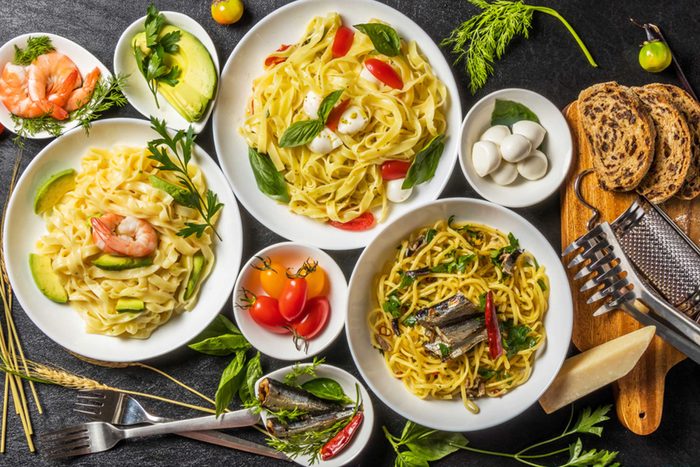
Power up your pasta
While pasta can be easy and delicious, it lacks veggies, says Scritchfield. “Take a potato peeler and make ribbons with zucchini and carrots. Instead of replacing pasta altogether, add in the veggie ‘noodles’ and toss with diced tomato and fresh parsley. Finish with a squeeze of 1/4 lemon and a bit of salt and pepper to taste preferences,” she advises. Also worth trying: Chickpea noodles!
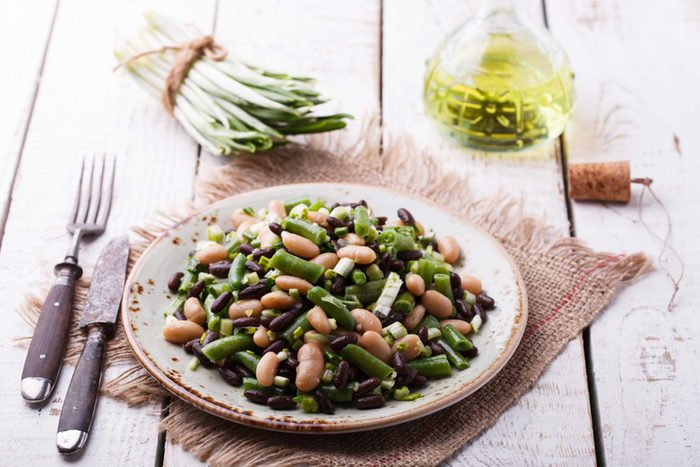
Remember protein
Help your veggies go the distance by pairing them with protein-rich foods to sustain your energy and balance your blood sugar between meals, says Julie Brown, RD, National Nutrition Program Coordinator and a dietitian at Life Time Fitness Tempe. (Here’s why nutritionists recommend protein to keep you fuller.)
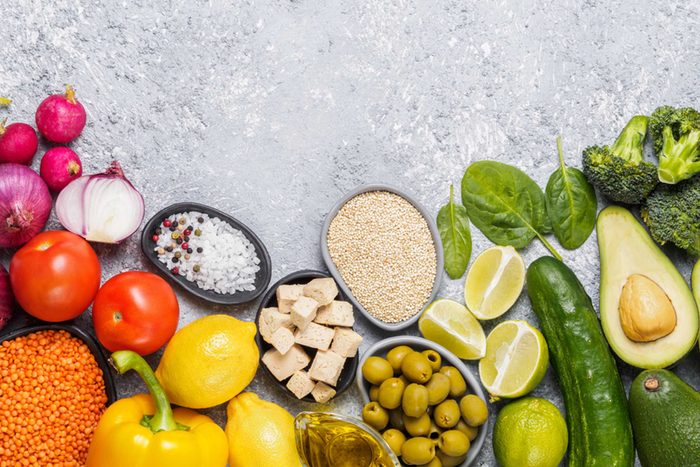
Keep fruits in check
Keep your fruit servings balanced. “Fruit is packed with nutrients, but it also nature’s candy and is sweetened with fructose,” explains Brown. “Ensure your veggies outnumber your fruits 3:1, or for ease limit to two fist-sized servings of fruit per day,” she clarifies.
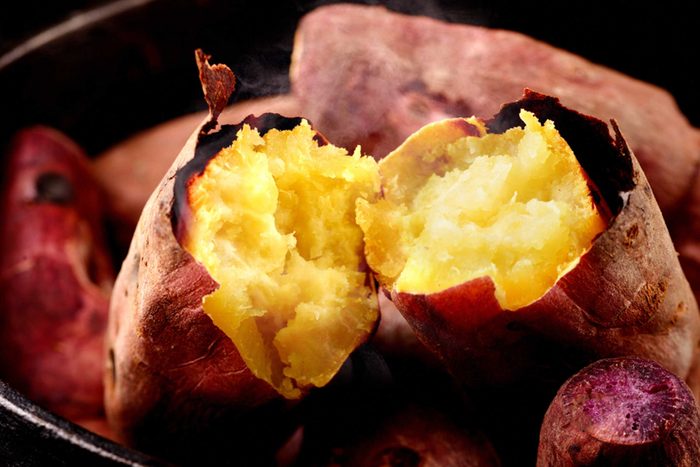
Mind your starches
Although potatoes are veggies, they warrant more portion control than broccoli, says Brown. “Keep your starches to a fist-sized serving and place them in your post-exercise meal with a great protein source whenever possible to optimize your recovery,” she says. (If you’re meals leave you peckish, make sure you’re working in the 12 most filling fruits and veggies, according to nutritionists.)
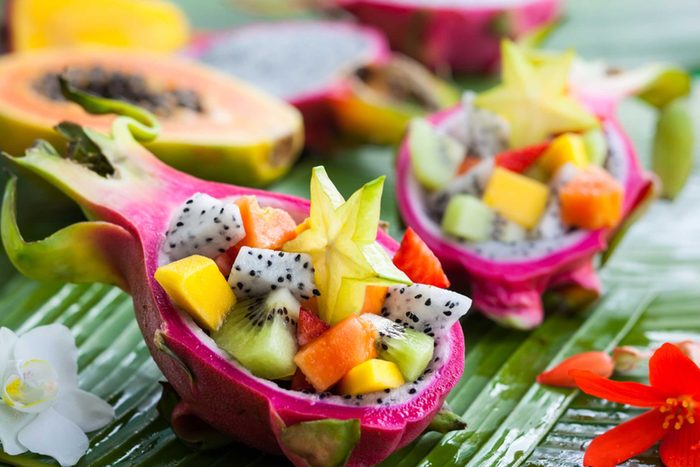
Explore the produce aisles
There is an abundance of colorful fruits and vegetables—and some may be new to you. “There is more to a plant-based diet than salads and baked potatoes,” says registered dietitian Rebecca Lewis. “Think of it as a fun game: if you like potatoes, give sunchokes, turnips, or parsnips a try. If you like spinach, try swapping it out with Swiss chard or collard greens,” Lewis says. For more of a twist, Lewis recommends venturing into the tropical produce aisle and check out fruits like mangos, kiwis, pineapple, passion fruit, plantains, or lychees. (Here are some tips on eating plant-based on a budget.)
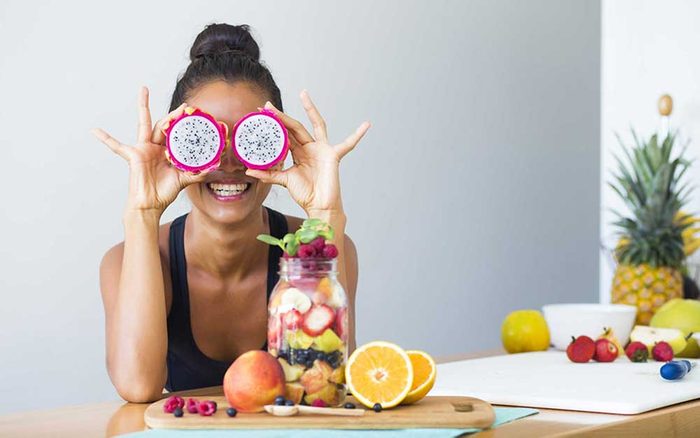
Pay attention to how you feel
One of the most rewarding aspects of adding in more plant-based foods is that you will notice an increase in energy and mood, Lewis says, “Moreover, plants contain a lot of fiber and you may notice that you feel fuller for longer and are less prone to cravings and snacking throughout the day,” Lewis says. And remember, the benefits of fiber are astonishing. “By placing attention on the positive, it becomes motivating and reinforces why you are choosing to add more plant-based foods into your everyday choices.”

